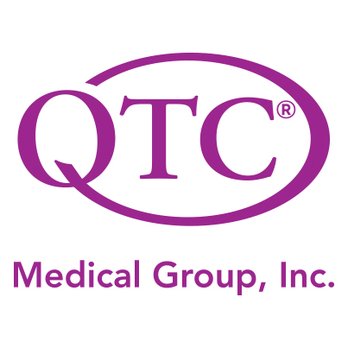
Are you a mental health care professional seeking a more streamlined approach Qtcm login to managing your practice? If so, explore the benefits of the Provider Admin Qtcm Login. This user-friendly portal is meticulously crafted to simplify business operations for mental health care providers, offering convenient access to patient records, billing details, and other crucial documents.
Through the QTC Provider Portal Login, effortlessly retrieve patient data, submit claims, and review your payment history. This indispensable tool is designed to empower mental health care providers in optimizing their business processes. Continue reading to discover more about the QTC Provider Portal Login and how it can enhance the efficiency of your practice.
How do I set up QTC?
Step-by-step Instructions for Setting Up Your New Username and Password
Step 1
Initiate the registration process by clicking the ‘Start registration’ button on the QTC Link homepage.
Step 2
Locate the ‘Sign-up now’ option adjacent to the phrase ‘Don’t have an account’ and click on it.
Step 3
Generate a new ‘Username’ (excluding email addresses) with the following criteria:
- Commence with alphanumeric characters
- Utilize only the symbols ‘_’ and ‘–’
- Exclude spaces
Create a new ‘Password’ with the following specifications:
- Must be between 8 and 64 characters
- Include at least 3 of the following:
- a lowercase letter
- an uppercase letter
- a digit
- a symbol
Confirm the newly created ‘Password.’
IMPORTANT: Input the email address registered with QTC, then click on [Send verification code].
Step 4
Retrieve the verification code sent to your email address. Note: If the email is not received within a few minutes, check your Junk or Spam folder.
Enter the verification code to confirm your email address (which must already be registered with QTC).
Click on [Create].
Alternatively, if you attempted to use a non-registered email address, you can opt for [Change email] to update the address to your registered email.

What does QTC do?
The QT interval serves as a crucial metric, representing the comprehensive duration from ventricular depolarization to complete repolarization. This intricate process initiates at the onset of the q wave and concludes at the termination of the T wave. In instances where no q wave is present, the commencement point shifts to the very beginning of the R wave.
Numerous factors exert influence over the QT interval, rendering it a multifaceted measurement. Heart rate, autonomic nervous tone, sympathomimetics, electrolytes—especially calcium—certain medications, patient age, sex, and even sleep patterns contribute to the variability in this duration. Regrettably, the complexity involved in assessment and interpretation often leads to the oversight of this measurement by Paramedics.
This oversight is unfortunate because monitoring the QT interval can serve as a valuable tool in identifying potentially life-threatening issues before they manifest. To facilitate easier assessment, charts have been devised. These charts typically consider heart rate, and often, the sex and age of the patient. They provide reference points for both normal and upper acceptable QT interval measurements. Recognizing the significance of QT interval monitoring can significantly enhance the ability to preemptively address critical cardiac issues.
What is QTC business?
Quote-to-Cash (Q2C / QTC) represents a comprehensive business process that spans the entire sales cycle, from initiating a price quote to finalizing a deal and securing payment. This strategic process is widely employed by Software as a Service (SaaS) companies to effectively manage and streamline their sales operations, covering the entire spectrum from customer acquisition to revenue recognition. The Q2C framework proves instrumental for SaaS enterprises, offering a unified platform to oversee quotes, orders, contracts, billing, and payments seamlessly. Typically, the Q2C process is facilitated through specialized software systems that integrate seamlessly with other critical business applications, including Customer Relationship Management (CRM), Enterprise Resource Planning (ERP), and billing systems.
The advantages of adopting Q2C in the SaaS landscape are manifold. SaaS companies stand to gain increased operational efficiency, enhanced visibility into the sales process, and a notable reduction in errors and delays associated with billing and revenue recognition. Beyond these operational enhancements, the Q2C process also plays a pivotal role in ensuring compliance with regulatory requirements, mitigating the risk of revenue leakage and fostering a more robust financial framework for SaaS enterprises.

Is QTC medical on behalf of the VA?
QTC serves as a contractor for the Veterans Affairs (VA), specializing in conducting medical examinations for the VA.
Within the VA, Clinical and Procedural (C&P) examinations are undertaken by VA health care professionals dedicated to assessing veterans seeking disability benefits. These professionals, solely focused on conducting compensation and pension examinations, evaluate the medical conditions of veterans and meticulously document their findings in a comprehensive report. This report is subsequently forwarded to the VA disability rating officer for further consideration.
In my personal perspective, opting for an evaluation conducted by a VA medical professional rather than a QTC examiner yields a more comprehensive assessment. I frequently receive complaints from numerous clients dissatisfied with their QTC examinations.
It is essential to maintain a composed demeanor and refrain from engaging in confrontations with either QTC or VA employees. However, in the event that an examiner makes an inaccurate statement, it is advisable to promptly address and correct the error. Following the examination, it is crucial to document any concerns or complaints and communicate with your attorney. This proactive approach ensures that the evaluation process remains accurate and fair, contributing to the overall success of the disability benefits application.

Leave a Reply